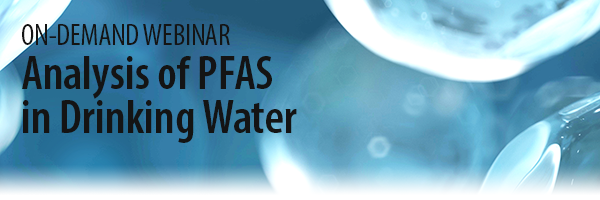Do you need some help with PFAS testing? If so, this on-demand webinar provides solutions in line with the updated method, EPA 533 and explains what measures can be taken to mitigate external contamination sources.

EPA 533 is set to become increasingly important to water testing labs. This updated method is presented for analysis of multiple short-chain PFASs, including telomers and precursor compounds, that cannot be measured via EPA 537.1. In addition, sources of external contamination in the start to finish analysis of PFASs are reviewed, along with sample processing workarounds to protect the integrity of data generated and achieve desired detection limits.
By viewing this presentation you will:
- achieve a fundamental overview of all existing and up and coming EPA regulated methods for the analysis of PFASs methods
- assess various potential sources of background PFAS contamination within the testing methods and learn what measures can be taken to mitigate those
- learn all start to finish PFAS testing resources UCT offers for this scope of analysis to include SPE consumables, processing manifolds, and analytical columns.
The Presenter
 Abderrahim Abdelkaoui
Abderrahim Abdelkaoui
(Head of R&D Lab, UCT)
Abderrahim Abdelkaoui is head of the R&D lab at UCT, Inc. and has notable experience with sample preparation and analytical chemistry. Abder has been working under EPA guidelines to generate environmental applications, utilizing UCT's host of products and chemistries. Graduating from Temple University with a Biochemistry degree, Abder also contributes within the forensic and clinical arenas.

